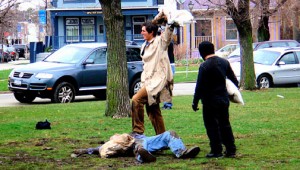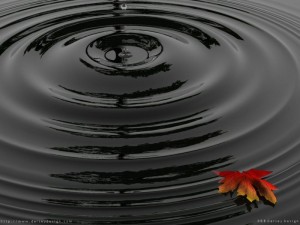Bagua Mud Walking
/ I’ve heard mud walking refers to waist high thick river mud that makes your legs heavy and forward progress difficult. I’ve heard that it is the stickiness of surface mud which creates a delay of the foot finding the ground and mushing in and then holds it back when one tries to pick it up creating an opening and closing of the joints, particularly the hip (kua).
I’ve heard mud walking refers to waist high thick river mud that makes your legs heavy and forward progress difficult. I’ve heard that it is the stickiness of surface mud which creates a delay of the foot finding the ground and mushing in and then holds it back when one tries to pick it up creating an opening and closing of the joints, particularly the hip (kua).On my own I came up with the idea that Tai Chi is an ocean art and Bagua is a mountain art. The Tai Chi body moves as if it was constantly re-balancing while standing up in a boat. The Bagua body moves as if it was constantly re-balancing while walking along a mountain ledge. In either case, if you tense up your belly you are in trouble. On the ocean if you tense you will loose your balance and fall down. I suspect that sea sickness happens because the length of an ocean swell is longer than we can hold and release tension. The more chaotic the environment the more important it is that rebalancing happens continuously, a muscular on/off switch will fail under natural pressure. When walking on mountain ledges you simply have to have the feeling of upwardness connected to continuous rebalancing or you will freak out every time you look down. It is both a spacial presence and a letting go.
The more upright you are, the easier it is to relax the belly, and the more relaxed your belly is, the easier it is to continuously rebalance.
Walking in mud also has this ‘just drop the pretense of superiority’ tone to it. After all, walking in mud is just a slip away from rolling in it! In that sense walking in mud means giving up social conventions. Walk like you really don’t care who is watching. Discard all your style, swagger, swing, lilt, lithe, bounce, and strut.
 Nearly every video I’ve put on Youtube has at sometime been criticized by some yabo who insists that a STREET FIGHT is the purpose and the meaning of life. While humans have been leveling ground for many centuries, the ubiquity of street pavement is quite new. 150 years ago most fights and surprise attacks happened in mud or dust. That was true on the battle field, in towns, and on country roads. Of course there was snow too, and many other surfaces, some of them level some steep and rocky, but as often as not, the ground was slippery and unstable.
Nearly every video I’ve put on Youtube has at sometime been criticized by some yabo who insists that a STREET FIGHT is the purpose and the meaning of life. While humans have been leveling ground for many centuries, the ubiquity of street pavement is quite new. 150 years ago most fights and surprise attacks happened in mud or dust. That was true on the battle field, in towns, and on country roads. Of course there was snow too, and many other surfaces, some of them level some steep and rocky, but as often as not, the ground was slippery and unstable.And on slippery ground, getting power from pushing against the ground (a so called ‘ground path’ strategy) doesn’t work. What we in the martial arts world call “rooting” is simply a losing strategy. It’s like when a football player hits you at full speed while you are just standing there.
 So in my humble opinion, all these explanations of mud walking have their place, but the best explanation is that mud walking is walking on a very slippery surface. A surface where you don’t rely in any way on either forward momentum which pushes off the back foot, nor on rebalancing by using the front foot as a brake. The center of mass must stay over the feet without structural tension, without engaging any posture correcting muscles. In Bagua, the center of mass spins like a top to maintain uprightness with momentum.
So in my humble opinion, all these explanations of mud walking have their place, but the best explanation is that mud walking is walking on a very slippery surface. A surface where you don’t rely in any way on either forward momentum which pushes off the back foot, nor on rebalancing by using the front foot as a brake. The center of mass must stay over the feet without structural tension, without engaging any posture correcting muscles. In Bagua, the center of mass spins like a top to maintain uprightness with momentum.Below is mud, all around is water; the body is like a pebble landing in a still pond, sending out ripples of pure yang qi-- the substance of inspiration.
Now go get dirty.


